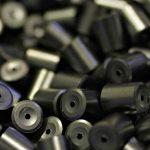The construction of AquaBounty’s largest GE salmon farm1 has hit a snag. Located in Pioneer, Ohio, the commercial salmon farm is slated to have an annual production capacity of 10,000 metric tons, and the company plans to invest up to $395 million in the project. Salmon were expected to be stocked in late 2024,2 but construction has been halted due to a steep rise in construction costs.3
While 75% of costs had already been established, costs for remaining items like piping and concrete have skyrocketed due to inflation. Speaking with The Village Reporter, AquaBounty CEO Sylvia Wulf said the company intends to proceed with the project, just at a later date:4
“We absolutely intend to continue construction of the farm. We are looking at the most prudent path forward. We have no intention of letting all the money go to waste. We will find another path forward. We are working with the construction firm to secure the site while we are working with them on value engineering, cost reduction and a phased approach. We are already well along into phase 1.”
The company is hoping that construction will resume in August 2023,5 but for the sake of human health and the environment, let’s hope it doesn’t.
Genetically Engineered Salmon Churning Out in the Midwest
In November 2015, the U.S. Food and Drug Administration approved AquaBounty salmon, which contains the DNA from two other fish, a growth-promoting gene from a Chinook salmon and a “promoter” gene from the eel-like ocean pout.
This makes the fish grow faster, which means they reach harvesting size sooner and ultimately require less food — a money-saver for the biotech companies behind these industrial salmon farms. GE salmon grow twice as fast as wild salmon, which means they reach market size of 8 to 12 pounds in just 18 months, compared to 36 in the wild.6 According to the FDA:7
“AquAdvantage Salmon has been genetically engineered to reach a growth marker important to the aquaculture industry more rapidly than its non-GE Atlantic salmon counterpart.
It does so because it contains an rDNA construct that is composed of the growth hormone gene from Chinook salmon under the control of a promoter (a sequence of DNA that turns on the expression of a gene) from ocean pout (another type of fish). This allows the salmon to grow faster.”
Initially, the approval allowed the GMO salmon to be produced at an AquaBounty facility in Panama and another in Canada. In 2018, the FDA approved a supplemental application, allowing the company to grow GE salmon at a facility near Albany, Indiana.
The Panama facility has since closed for “business reasons,”8 but the Albany facility — a 122,000 square-foot space — can produce 1,200 metric tons of GE salmon annually. The first harvest of GE salmon occurred in 2021.9 The FDA also approved a second Canadian facility in 2019, where AquaBounty produces salmon eggs.10
The Pioneer, Ohio, facility, however, is slated to be the biggest yet. At an estimated 479,000 square feet, AquaBounty boasts that it “strategically locates its land-based farm facilities within easy reach of key U.S. markets to accelerate delivery of fresh and safe Atlantic salmon to consumers.”11
The company expects to stock its first salmon eggs at the facility in late 2024, with the first salmon harvest expected mid-2026.12
GE Salmon Isn’t Labeled ‘Genetically Engineered’
The first shipments of GE salmon were sent to U.S. restaurants in 202113 — but they weren’t labeled genetically engineered. The USDA included AquaBounty’s salmon on a list of foods that must instead be labeled “bioengineered” (BE) under the National Bioengineered Food Disclosure Standard. According to the FDA:14
“The United States Department of Agriculture’s Agricultural Marketing Service (USDA AMS) regulates the disclosure of bioengineered content on the labeling of human food from GE salmon, including AquAdvantage Salmon, under the National Bioengineered Food Disclosure Standard.
This law and its implementing regulations, issued on December 20, 2018, require that human food containing GE salmon bear labeling indicating that it is bioengineered.”
However, food served in restaurants or “similar retail food establishments” is exempt from the labeling standard. This means that restaurants, cafeterias, food trucks and even salad bars that sell food within a retail establishment don’t have to disclose to consumers if they’re serving GE salmon.15
In a survey of 800 Americans, 89% said they were in favor of mandatory labels on foods that have been genetically engineered or contain genetically engineered ingredients. When asked whether they’d rather have genetically modified organism (GMO) labels printed on food packages or in the form of a bar code that could be scanned with a smartphone, 88% said they preferred printed labels.16
Citing environmental risks and harm to Indigenous communities, Aramark food service company announced in 2021 that it wouldn’t sell GE salmon. A number of other food service companies and grocers, including Compass and Sodexo, followed suit.17
Judge Rules FDA Violated Law in Approving GE Salmon
AquaBounty markets its frankenfish as a way to “bring fresh salmon to the market in a responsible and sustainable way.”18 But there are significant risks, including to human health and the environment. GE salmon can escape into the wild, where they can breed with wild fish, threatening natural species.19
In 2016, the Center for Food Safety (CFS) and other environmental groups sued the FDA for approving the GE salmon, and in a victory, the U.S. District Court for the Northern District of California ruled in 2020 that the FDA “violated core environmental laws” when it did so.20 According to CFS:
“The Court ruled that FDA ignored the serious environmental consequences of approving genetically engineered salmon and the full extent of plans to grow and commercialize the salmon in the U.S. and around the world, violating the National Environmental Policy Act.
The Court also ruled that FDA’s unilateral decision that genetically engineered salmon could have no possible effect on highly-endangered, wild Atlantic salmon was wrong, in violation of the Endangered Species Act. The Court ordered FDA to go back to the drawing board and FDA must now thoroughly analyze the environmental consequences of an escape of genetically engineered salmon into the wild.”
Mike Conroy, executive director of the Pacific Coast Federation of Fishermen’s Associations, one of the suit’s plaintiffs, praised the ruling, stating:21
“It’s a terrible idea to design genetically engineered ‘Frankenfish’ which, when they escape into the wild (as they inevitably will), could destroy our irreplaceable salmon runs. Once engineered genes are introduced into the wild salmon gene pool, it cannot be undone. This decision is a major victory for wild salmon, salmon fishing families and dependent communities, and salmon conservation efforts everywhere.”
Health Risks of ‘Frankenfish’
There are risks to human health as well, as the short- and long-term consequences of eating GE salmon are unknown. AquaBounty again tries to downplay the unnatural, unknown risks of its product, and passes it off as, “Genetically engineered one time 30 years ago, it’s the safe and fresh choice — responsibly raised right here in the U.S.”22
But in their issue brief on GE salmon, consumer group Food & Water Watch raised several important points:23
“The limited summaries of data that the FDA has released about the food safety of GE salmon show troubling results. GE salmon exhibited 40 percent higher levels of a hormone called insulin-like growth factor 1, which has been shown to increase the risk of certain cancers.
Also troublingly, GE salmon exhibited as much as 52 percent higher levels of ‘allergenic potency,’ which indicates possible allergic reactions from consumers.”
There were also concerns that the salmon may have less protein and differences in vitamin, mineral and amino acid levels compared to non-GE salmon, which, according to Food & Water Watch, “the FDA did not rigorously investigate.”24 GE salmon raised at AquaBounty’s massive land-based facilities also face the same pitfalls as concentrated animal feeding operations (CAFOs).
The fish consume unnatural diets and are raised in tight, cramped conditions where disease can flourish. Animal welfare concerns are also significant. In an aquaculture facility in Florida, noise and vibrations from construction severely stressed and weakened the fish, leading to the culling of 200,000 fish.25
The company, Atlantic Sapphire, killed another 600,000 fish by operating a faulty filtration system, Animal Outlook reported. “Although the salmon at these two facilities are non-GMO, the conditions are indicative of the industry as a whole and the fate of AquAdvantage salmon,” it added.26
How to Choose Wild, Non-GMO Salmon
Whether the pause in construction at AquaBounty’s Pioneer, Ohio, facility results in a meaningful delay of GE salmon coming to grocery stores remains to be seen. It’s also possible that the court ordering the FDA to more thoroughly examine GE salmon’s risks to the environment could present another roadblock to keep GE salmon from going mainstream.
In the meantime, there are ways to avoid consuming GE salmon or farm-raised salmon of any kind. To spot wild sockeye salmon, look for bright red flesh, which occurs due to its astaxanthin content. It will also have only thin white stripes of fat, as wild salmon tend to be very lean. Pale pink salmon with wide fat marks is typically farmed.
Avoid Atlantic salmon, as salmon labeled “Atlantic Salmon” usually comes from fish farms. Instead, look for “Alaskan salmon” and “sockeye salmon,” as Alaskan sockeye is not allowed to be farmed. In addition to fresh Alaskan sockeye salmon, canned salmon labeled “Alaskan Salmon” is a safe option.
To avoid GE salmon, don’t purchase products labeled “bioengineered” and check any QR codes on the label to find out additional information. If you order salmon in a restaurant and it doesn’t specify that it’s wild-caught, avoid it — or at least ask the restaurant directly whether it’s GMO or not.
For the time being, many grocery chains have stated they won’t sell GE salmon, but it appears this may change in the future, so stay vigilant. Costco, for example, when asked if it sells GMO salmon, stated:27
“Here at Costco, we strive to always be as transparent as possible when discussing our sourcing policies. While the FDA has approved the sale of GMO salmon, we have not sold and don’t intend to sell GMO salmon at this time.”






